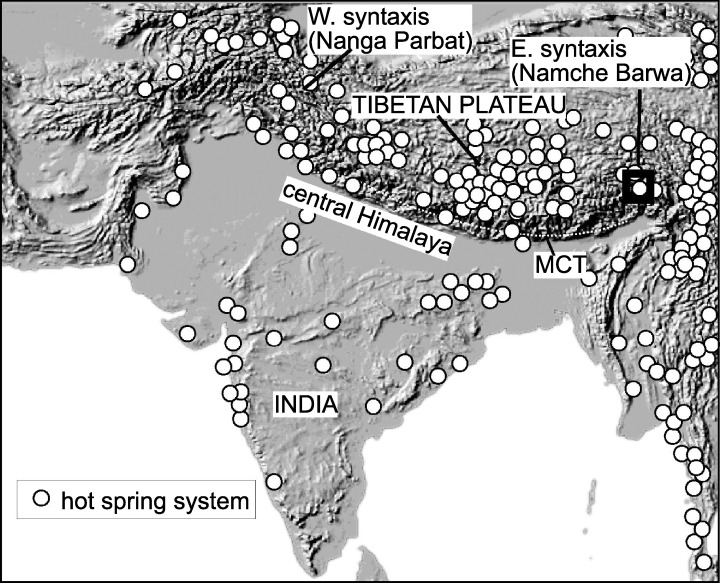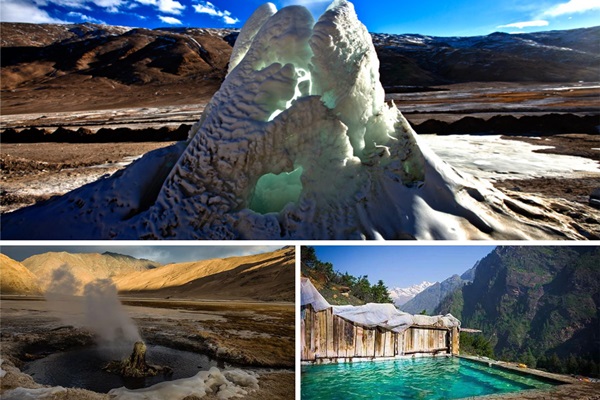HOT SPRINGS OF THE HIMALAYAS – Inexhaustible Source of Geo Thermal Energy – Still Largely Untapped
The hot springs of the Himalaya are located in the zones of deep faults that define tectonic boundaries between the Himalayan province and mainland Asia ( Indus – Tsangpo Suture, I-TS), between the Great Himalaya and Lesser Himalaya ( Main Central Thrust, MCT) and in between the Siwalik domain and the Lesser Himalaya (Main Boundary Thrust, MBT). The geo thermal activity is highest in the Ladakh region where heat flow is of the order of 300 mW/m2. Heat flow in the hot springs along the MCT have an average rate of 130 ± 30 mW/m2 whereas the average rate of heat flow in the MBT region is of of 41 ± 10 mW/m2 .

Clearly the Indus-Tsangpo Suture has the greatest potential in the Himalayan region. One such “hot-spot” of the ITS region is the Puga hot spring area located in Ladakh. It covers an area of 15 km2 and this single spot has the potential of 5000 MWh of energy.
Jonathan Craig, honorary professor at University College, London, and the University of Jammu, published a paper in May, 2013 on this subject. According to him “A 20 megawatt geothermal plant at Puga could save three million litres of diesel burnt annually in the region at a cost of approximately US$ 2 million,” “Such a plant” he adds “would eliminate the need for traditional kerosene stoves and gas-operated heaters during winter and prevent the emission of some 28,000 tonnes of carbon dioxide.”
This inexhaustible source of geo thermal energy is capable of producing hundreds of gigawatts of clean energy. since 1976, China has been operating a 25 megawatt plant in Yangbaijan, Tibet. Till 2014, the world had 11.13 gigawatts of geo thermal plant installed in 24 countries with the US leading with 3.15 gigawatts. Third world countries are not far behind. The Philippines and Indonesia hold the second and third place respectively producing 1.9 and 1.3 gigawatts of geo thermal energy.
Geo Moore, a geologist at the Energy and Geosciences Institute, University of Utah, told a conference on sustainable resource development held in the June, 2014 in Leh , “I hope lessons from elsewhere in the world can help harness these resources in the Himalayas,”
Sources:
Dynamic Himalaya by K S Valdiya
https://www.sciencedirect.com/science/article/pii/S0012825213000949
http://www.earthscienceindia.info/pdfupload/tech_pdf-1255.pdf
https://www.thethirdpole.net/en/2014/07/31/himalayan-geothermal-potential-untapped/
https://www.scidev.net/south-asia/environment/news/himalayan-geothermal-potential-untapped.html



Comments